Made possible by NIH/NHGRI R13HG010286 and the CWRU Institute for Computational Biology
Cleator, John
Assistant Professor
Division of Cardiovascular Medicine
Vanderbilt University Medical Center
Nashville, TN
African-Americans with coronary artery disease on the antiplatelet medication clopidogrel are at a 3-5 fold increase risk of having a major heart attack of stroke after a common procedure to open up blocked arteries with stents (coronary intervention). Understanding the root causes of this difference is vital in order to tailor medicine to prevent cardiovascular death. Clopidogrel works by blocking platelets from forming clots, but some individuals do not respond to clopidogrel and as a result there blood still clots (they harbor the loss-of-function CYP2C19 variant). This could be secondary to the patient simply not taking the drug as prescribed (non-compliant) or could be due to their bodies not breaking down the drug correctly of this drug (impaired metabolism). It is clear that non-compliance with clopidogrel places patients at increased risk of having a heart attack after coronary intervention. We seek to definitively measure compliance on clopidogrel with biochemical measurements on African-American patients on clopidogrel. While genetic differences in the metabolism of clopidogrel that associate with reduced antiplatelet effects are well described in Caucasian population, we seek to investigate this in African-Americans. Finally, we will measure novel measurements of platelet activation and correlate with racial genetic differences in a novel platelet receptor involved in clotting.
 Davis, Mary
Davis, Mary
Assistant Professor
Microbiology and Molecular Biology
Brigham Young University
Provo, UT
The Davis lab is statistical genetics lab and harnesses the power of electronic medical records (EMR) for investigating the genetic causes of complex human diseases. The main projects in the lab focus on multiple sclerosis (MS), an autoimmune disease. MS is a true complex disease, both in terms of risk factors and clinical presentation. Environmental and genetic risk factors are known to be involved, but many of them are a mystery. Additionally, patients with MS experience a variety of symptoms, disability levels, and responses to treatments. We mine EMR data, both structured and narrative text, to identify clinical traits of MS patients. With this information, we work to better understand the effect of genetic variation on MS, especially in the variable disease courses experienced by patients. Through this work, we hope to increase understanding of MS and provide better avenues for therapy of the disease. Current projects include identifying genetic predictors of adverse effects in treatments of multiple sclerosis. We have identified a variant associated with liver failure in MS patients on interferon-beta; we are replicating this work to identify the prediction power for clinical use. We are looking to see if this variant also predicts liver failure on other MS treatments, as well as searching for genetic variation associated with MS treatment efficacy.
 Dobson, Samori
Dobson, Samori
Undergraduate student
California Institute for Regenerative Medicine
Genea Biocells Intern
Miramar College San Diego
Oceanside, CA
While working towards a degree in biomedical engineering I was selected to participate in bridges to CIRM program. Now working for the Genea Biocells lab I’ve gotten the opportunity to network with experts in my field and determine what direction I want to pursue. While still very interested about specializing in more neurological specific research or even tissue engineering I’ve grown to love disease modeling via a stem cell approach. My lab currently works with neuromuscular and muscle cells from stem cells and so it has been a great Segway into the realm of neuropathy. Specifically, with stem cells, I differentiate them into myotubes in order to develope clinical solutions towards various muscular dystrophies. The current disease I am focusing on is MDC1A where I’m testing numerous compounds to asses their phenotypes. So far in my internship I’ve learned several culturing protocols, used numerous assay development platforms and learned several sequencing and information gathering techniques. I plan to stay in this industry and I am anxious to continue to grow as a scientist and learn far more.
 Dumitrescu, Logan
Dumitrescu, Logan
Research Assistant Professor
Vanderbilt Memory & Alzheimer's Center
Department of Neurology
Vanderbilt University Medical Center
Nashville, TN
As a Research Assistant Professor in the Hohman lab, I leverage advanced statistical approaches and computational ‘omics to identify novel treatment targets for Alzheimer’s disease (AD). Our work sits at the intersection of computational neuroscience and statistical genomics. We build strong phenotypes using neuroimaging, fluid biomarker, and cognitive data, and then leverage those phenotypes to identify molecular drivers of disease. For example, one of our primary areas of focus is on resilience to AD. Approximately 30% of older adults have all of the neuropathological features of AD (plaques and tangles), but never show clinical symptoms. That is, they are able to endure substantial brain injury without displaying memory or cognitive difficulties. We have developed a phenotype to define and identify these resilient individuals and are applying advanced genomic and proteomic approaches to characterize the molecular drivers of resilience by combining data from longitudinal datasets from around the world.
In addition to our focus on resilience, we are also interested in the heterogeneity of AD, including the comorbid neuropathologies that commonly occur with disease (most individuals with AD also have cerebrovascular disease) and the well characterized sex and racial/ethnic disparities in AD. We use autopsy, imaging, and fluid biomarkers, in combination with genetic data, to characterize the molecular factors that may contribute to concomitant disease or confer sex-specific risk or resilience to disease.
 Godfrey, Sherette
Godfrey, Sherette
Graduate Student
Applied Science and Technology
North Carolina A&T State University
Greensboro, NC
A&T is a research intensive doctoral university that seeks to advance knowledge and develop technologies that address society’s grand challenges and drive the economy of the state, nation and world. My contribution to A&T is through not only my research, but also through collaborations within the university across different departments which contributes to the research capabilities as it helps to bring together different departments and help to build an inclusive relationship amongst these departments rather than one of exclusion. I have attended and presented at conferences and symposiums showcasing the skills, techniques, and research in which I am working on at this university. At this time, I have three journal articles that have been published & conference abstracts that help to display the wealth of knowledge, skills, and usage of technology to address issues that are plaguing individuals across the world. Prior to coming to NCAT the laboratory techniques and skills that I now possess were not present, however, here I have had exposure to many different technologies and research that can impact the local and global communities. My current research is related to precision medicine as I previously and currently work with microRNAs in breast cancer. MicroRNAs can be used in genetic profiling to potentially act as prognostic and diagnostic tools for medical care. Future research for my post-doc will also utilize microRNAs, but will be focused on rare cancers.
 Hall, Jacob
Hall, Jacob
Bioinformatics Engineer
Informatics, Data & Analytics
The Simons Foundation
New York, NY
Previously, I was a post-doctoral fellow at the Ichan School of Medicine at Mount Sinai where I studied Lyme disease and acne (acne vulgaris). Both diseases are under-studied due to their non-life-threatening nature and overall lack of research funding, though both diseases can affect quality of life. My research of acne focused on two types of 'omics data -- the transcriptome (gene expression) and the microbiome. I helped build co-expression networks from expression in affected skin of cases and unaffected skin of cases and controls. Interestingly, I found gene expression differences between unaffected skin in cases and controls, suggesting baseline differences that predispose skin to development of acne. Additionally, I found preliminary evidence of a correlation between certain bacterial species and gene expression within skin.
Currently I am working with large autism datasets that have genetic data as well as a variety of phenotypic survey data. The complexity of both the dataset (multiple ethnicities) as well as disease pathogenesis of autism spectrum diseases requires research in line with the goals and approaches of precision medicine research. I have a wide range of computational biology interests that are related to precision medicine. One of my goals is to apply recent machine learning to genetic data quality control, processing, and research. In particular, machine learning is promising in that it may help to better integrate/classify data from patients of diverse background and better understand disease pathogenesis. Additionally, I'm interested in single cell sequencing, 3D genome structure, and epigenetics and how related technologies will evolve in the coming years to better aid in precision medicine.
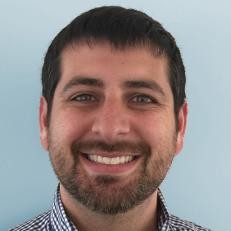 Hoffman, Joshua
Hoffman, Joshua
Investigator
Statistical Genetics
GlaxoSmithKline (GSK)
Philadelphia, PA
My research is focused on the application of computational and statistical methods to understanding the genetic contribution of a wide range of complex diseases. I use an array of approaches ranging from pedigree-based studies in founder populations focusing on rare variants, to large studies of unrelated individuals searching for pleiotropic effects across many loci. The common theme of my research has been my interest in leveraging novel techniques to maximize the yield from the data and identify novel loci for human diseases. Much of my current research is in understanding how we can map GWAS signals to specific genes for functional validation, and the importance of regional context when interrogating potentially pleiotropic loci identified through PheWAS studies. Taking advantage of the wealth of phenotype and genotype data made available through the UK Biobank and other publicly available datasets, I am working on developing high-throughput pipelines to perform variant to gene mapping for the use in drug target validation and development.
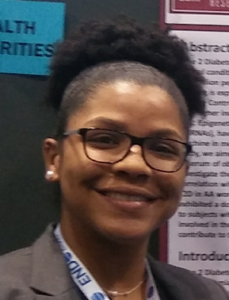 Jenkins, Willysha
Jenkins, Willysha
Graduate Student
Department of Biological and Biomedical Sciences
North Carolina Central University
Durham, NC
My current research involves using machine learning techniques and data mining to identify novel biomarkers of metabolic system. Furthermore, I examine these biomarkers and how they present themselves in groups that represent health disparities in MetS, such as ethnic groups and biological sex groups. Actively incorporating biology, computer science and clinical research allows for a creative and more inclusive approach to scientific research and will lead to more precise clinical diagnosis and treatment practices.
Health disparities are seen in virtually every disease or condition that presents itself in our society. Although there is undoubtedly a socio-economic and environmental component to this phenomena. It is my belief as a scientist that there is undoubtedly biological component as well. It is this component that empowers us to ask intelligent questions and conduct research that gives a more insight on specific groups, and not continue to look at science, clinical research and treatment in generalized ways. In my current and future research I will continue to marry computational science, biology and clinical research to identify causes of disease, the health disparities seen in them and develop early warning systems and treatments specific to those most affected.
 Melendez, Quantil
Melendez, Quantil
Post-doctoral fellow
Pharmaceutical Science
North Carolina Central University
Durham, NC
My long-term research goal is to identify novel regulators for cardiovascular diseases, I am currently focused on developing novel inhibitors for industry use on various metabolic disease such as hypercholesterolemia. My academic research experiences have provided me with diverse skills in various biological disciplines including; cell biology, microbiology, biochemistry, and genetics. As an undergraduate I participated in proposing novel drug targets for Helicobacter pylori. During pre-doctoral training I was able to identify and characterize virulence genes in novel strains of Haemophilus ducreyi. My doctoral training involved the derivation of a novel metabolic disease diagnostic assay as well as the identification of novel PCSK9 protein inhibitors. The basis of this work answered the need for proper diagnosis and personalized therapy for hypercholesterolemic patients. As a member of the Lopez research team I am privileged to mentor graduate and undergraduate students in active research, heightening my autonomous investigating abilities. I became proficient in identifying and quantifying novel proteins based on their interactions with PCSK9 and the LDL cholesterol receptor. My doctoral dissertation mentor and I have published research manuscripts elucidating novel research findings associated with cardio-metabolic diseases. The current research initiatives we are working on will provide benefit to the scientific and medical community, ultimately providing resolve to many health disparities and metabolic diseases.
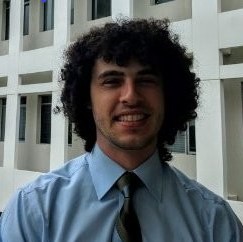 Melin, Kyle
Melin, Kyle
Assistant Professor
School of Pharmacy
University of Puerto Rico Medical Sciences Campus
San Juan, Puerto Rico
I have always been interested in both the clinical and practical applications of research. As a practicing clinician, I have a deep appreciation for the real-world benefits that advances in research can bring to my patients. Unfortunately, not all minority populations have benefitted to the same extent from recent advances in clinical research. As a clinical researcher, I have been actively involved in the study of pharmacogenomics and personalized medicine in the Hispanic population. Through my research, I hope to develop the research capabilities to better measure, understand, and utilize the genetic basis for observed drug response variability in the Hispanic population to enable clinicians to provide higher quality care through personalized medicine approaches. As an early career researcher in this field, I am working under the mentorship of Jorge Duconge, Ph.D., Professor of Pharmacogenomics and Pharmacokinetics at the University of Puerto Rico Medical Sciences Campus (UPR-MSC). Through our collaboration, I have authored and co-authored several peer-reviewed manuscripts on pharmacogenomics and am now a co-investigator on a 5-year clinical trial funded through NIMHD (U54MD007600). In addition to my research in pharmacogenomics, I have also been actively involved in a variety of community-based research projects that evaluate the effectiveness of pharmacist-based interventions in improving health outcomes and serve as the research coordinator for the UPR-MSC PGY-1 residency program in community pharmacy practice. Ultimately, I hope to bring my clinical and practice based research together to bring the benefits of advances in pharmacogenomics research to the Hispanic population which I serve.
 Mendoza, Sonia
Mendoza, Sonia
Graduate Student
Department of Sociomedical Sciences
Mailman School of Public Health
Columbia University
New York, NY
My research aims to assess socio-structural influences on health through qualitative and quantitative research methods. Stemming from my work in community-based health intervention studies among Latina youth, my interest in social determinants of health and minority health carried over to my work as a master’s project where I analyzed the role of social networks and social cohesion in relation to health behaviors and health outcomes within enclaves of Latino communities in the United States. I have also worked in research projects that explore addiction and racialized medicine, mental health, stigma, and public policy.
 Moarefian, Maryam
Moarefian, Maryam
Graduate Student
Mechanical Engineering
Virginia Tech
Blacksburg, VA
The tumor microenvironment heterogeneity and extracellular matrix can cause chemotherapeutic resistivity which is problematic in is effective drug delivery into the tumor. The electrotherapy treatments such as iontophoresis, flow therapy treatment such as intraperitoneal chemotherapy, and heat therapy such as hyperthermia are promising treatment to overcome the cell membrane barrier against the drug delivery. The cost of drug and biomedical devices development has increased due to the high number of pre-clinical and clinical trials. The application of advanced computational fluid dynamic model validated with 3D cell culture systems has proved benefits in providing more physiologically relevant conditions and a capability of mimicking biomedical devices for cancer treatment. To develop the effectiveness of recent cancer treatment such as iontophoresis, and intraperitoneal chemotherapy treatment, a 3D microfluidic device platform to effectively control the flow rate, drug dosage and the electric current intensity was developed. The novel fabricated device mimic the tumor extracellular matrix by MDA-MB-231 spheroids formation in the hydrogel, the lymph vessels (paclitaxel sink), and the blood vessel (paclitaxel source. The fraction of tumor killed is also measured experimentally under the effect of paclitaxel electroosmotic flow, and electrophoretic movement of drug particles using Live/dead cell staining at various hydrogel depths. Computational fluid dynamic model predicted the fraction of tumor killed under the effect of flow and electric field. Computational model is finally validated with proposed in-vitro experiment.
 Mollison, Lonna
Mollison, Lonna
Post-doctoral fellow
Department of Genetics
University of North Carolina
Chapel Hill, NC
My interest in genetics first began during my undergraduate training when I was introduced to the intricacies of the cell, all made possible by the instructions maintained in DNA. Since this time, I have maintained a deep fascination with the ability to harness the DNA code to better inform clinicians and patients of how to treat or prevent diseases with genetic etiologies. Advancements in DNA sequencing technology make it possible to sequence the entire genome at birth, ideally providing a genetic roadmap to guide healthcare decisions for a lifetime. Yet, genome-scale sequencing in healthy newborns raises important ethical, legal and social implications (ELSI), partly because of the ability to detect adult-onset conditions and devastating conditions that lack any treatments. During my postdoc training I have worked to develop a feasible, cost-effective approach to integrate genetic screening into routine wellness visits for newborns and children, an approach called age-based genetic screening (ABGS). ABGS would mitigate many ELSI concerns as screening would be limited to medically actionable conditions that are relevant to the age of the child. I have worked with a team to validate and optimize an affordable targeted-sequencing technology that could be amenable to population-level genetic screening. I will continue to work to develop targeted gene panels that could be integrated into wellness visits during childhood development for the pre-symptomatic detection of rare, single-gene disorders.
My current research training and future research plans are both devoted to understanding how to bring genomic medicine and cutting-edge treatments and technology to the population in a way that allows all people to equally benefit from advancements in precision medicine. During my postdoc I am working to develop ABGS. This approach to population-level genetic screening mitigates ELSI concerns, alleviates the need for exhaustive consent forms that can overwhelm parents, confines screening to actionable conditions, and uses a technology that is affordable. Thus, ABGS can bring precision, genomic medicine to people in both rural and urban locations who represent a broad socioeconomic spectrum. Furthermore, I am also interested in the need to increase diversity in genomics research. Understanding how best to implement population-level genomic medicine will involve actively engaging those communities who have been unintentionally excluded or underrepresented in genomics research. I am the primary investigator on a focus group study that is assessing the viewpoints of African American parents to ABGS. The goal of this study is to identify concerns that emerge about ABGS. By addressing concerns about ABGS upfront, we will facilitate the development of educational tools and a framework for implementing ABGS that will increase the uptake of a potentially life-saving genetic screening program in all communities. It is my goal to continue both the technical development of ABGS and the stakeholder engagement activities as we implement ABGS in pediatric practices across North Carolina.
 Pollante, Michael Vincent
Pollante, Michael Vincent
Undergraduate student
California Institute for Regenerative Medicine
Sanford Consortium for Regenerative Medicine
University of California San Diego
San Diego, CA
I am presently a California Institute for Regenerative Medicine (CIRM) intern at the Sanford Consortium for Regenerative Medicine (UCSD), in the Lawrence Goldstein Laboratory. As a CIRM intern, I was granted the opportunity to join the Bridges to Stem Cell Program which aims to advance Stem Cell therapeutics to patients with unmet medical and clinical needs. I am currently doing research on Alzheimer's Disease (AD), primarily studying the genetic risk variant APOE, and observing its axonal transport. This introductory exposure to AD research sparked my interest in genetics. My future research plans relate to precision medicine as I am aware that Alzheimer's Disease can not and has not been answered with the "one size fits all" ideology, scientists have tried for decades. Every single organism is different and there are many gene isoforms to investigate from just APOE alone. I am determined to utilize my research of studying and quantifying APOE's axonal transport to specific groups of patients, narrowing the parameters, and observing any similarities or differences in the transport of these groups, and eventually using these studies to contribute in achieving drug discovery for AD.
 Rogers, Kristen
Rogers, Kristen
MD/PhD candidate
Department of Medicine
Infectious Disease
University of Texas Health Science Center at San Antonio
San Antonio, TX
I am a 5th year graduate student in a lab that broadly focuses on the host immune response to HIV and allergy. My dissertation project focuses on how the host immune response to chronic antigenic challenge regulates immunologic recovery within the highly relevant model systems of chronic HIV and chronic HCV infections. I am using innovative genetic, genomic, and flow cytometric tools to study these mechanisms. High-throughput genotyping of large, intensely studied prospective cohorts, whole transcriptome sequencing, and functional flow cytometry allow us to connect genes to function and establish a causal role for interindividual genetic variations in response to chronic immune challenge. I believe the knowledge gained will be broadly applicable to a variety of disease contexts and allow for a more complete and integrated view of these mechanisms with potential to better gauge immune health and provide better personalized clinical care.
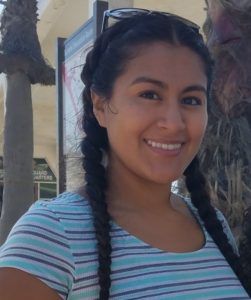 Salgado, Bianca
Salgado, Bianca
Undergraduate student
California Institute for Regenerative Medicine
Institute of Genomic Medicine
University of San Diego California
La Jolla, CA
I am currently a California Institute for Regenerative Medicine (CIRM) intern at Dr. Kelly Fazer’s laboratory at UCSD. CIRM offers a bridges program for undergraduate students to become personally involved working in labs with stem cells, with the overarching goal of increasing the number of individuals who work in stem cell research and therapy development. As a CIRM intern I have received a fellowship that enables me to work full time in Dr. Frazer’s laboratory for an entire year. One of the reasons I choose to work in Dr. Frazer’s laboratory is because of my interest in human genetics, especially with how to include diverse populations in the current genetics revolution that is occurring. My family has a long history of diabetes, being personally affected by the chronic disease I have gained interest and passion and want to improve treatment. Through precision medicine and epigenetic work, we can work toward pioneering new methods of treatment and drug scanning to reduce the impact of diabetes in the Mexican American and other populations.
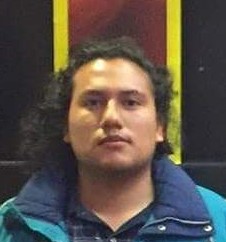 Santiago, Isaac
Santiago, Isaac
Undergraduate student
California Institute for Regenerative Medicine
Biotechnology
California State University San Marcos
Escondido, CA
I am currently involved with the CIRM (California Institute for Regenerative Medicine) program. I was selected to intern in Dr. Shauna Yuan's lab. I am currently working on Neural Stem Cells derived from induced pluripotent stem cells. I am currently focused on the relationship Circular RNA has on neural development, specifically the RNA transcripts from the RMST gene. How My current and future research plans relate to precision medicine is in that induced pluripotent stem cells can be derived from any patient. Personalized medicine goes hand in hand with the results obtained from a specific patient's induced pluripotent stem cells. I want to get a PHD in neuroscience and it is always a great opportunity to get insights from other experts and see experiments can help or be made better.
 Shah-Williams, Ebony
Shah-Williams, Ebony
Graduate Student
Department of Medical and Molecular Genetics
Indiana University School of Medicine
Indianapolis, IN
My research interest are both in biological mechanisms and personalized medicine. Currently, I am focused on an invitro RNA binding assay; utilizing crosslinking, immunoprecipitation and sequencing of miRNA-mRNA hybrids to determine which mRNA’s transcripts are being targeted by miRNA’s. miRNA’s are small, dynamic RNA molecules that guide the silencing of gene products and are at the forefront of potential drug therapeutics. My research interest in personalized medicine is guided and inspired by personal experiences with my mom having neuropathy pain, as a result of chemotherapy and being involved in a study which looked at Cytochrome P450 variants and warfarin outcomes in African Americans. This study ignited my interest in personalized medicine! I understood and recognized the value in knowing how one’s genotype and metabolizing status could affect their drug response. Next generation sequencing help revolutionize genomic research. I am excited about continuing to learn and be a part of the transformation from bench to focused bedside treatment. I believe the current and emerging technologies today will ultimately transform the way doctors treat disease and may translate to decreased opioid use and abuse in individuals, enhanced trust with the prescriber, better health outcomes overall and improved health for underserved populations. One of my current research projects is focused on identifying differences in pharmacological clinical trial enrollment outcomes stratified by ethnicity, sex, age and medically underserved areas and populations. These kind of studies are essential in helping to identify motivation for agreeing or refusing to participate in clinical trials, which may have significant benefits in the way clinical trials are designed and addressing gaps that may unintentionally exclude minority populations from being involved. Ultimately, in this study, my goal is to understand how we can recruit underserved populations to participate in clinical trials that can lead to improved health outcomes in these populations.
 Tate Hudson, Tia
Tate Hudson, Tia
Graduate Student
Department of Biological and Biomedical Sciences
North Carolina Central University
Greensboro, NC
In my current research project, we present the Data Integration Expectation Map (D.I.E.M), where we explore the scientific value of integrating various `omic data combinations with clinical and demographic data to improved our understanding of breast cancer disparities. The complexity and heterogeneity of breast cancer requires the development of equally complex breast cancer models with multiple layers of biological information. Thus, developing the most comprehensive biological models of breast cancer disparities must consider the multiple appropriate layers of genomic, epigenomic, transcriptomic, proteomic, and metabolomic regulation, as well as the potential role environmental and social factors play at each `omic level. Advances in high throughput technologies and the availability of multi-`omics data impart the opportunity for development of these models and more holistic understandings of biological regulation in breast cancer disparities. Therefore, the goal of D.I.E.M is to convey the potential for integration of clinical, genomic, epigenomic, transcriptomic, proteomic, and metabolomic data for improving our understanding of the nature of breast cancer disparities. Our goal is also to conduct an integrated analysis of several breast cancer cell lines processed with various `omics technologies, including: transcriptomics, lipidomics, metabolomics, and epigenomics. With that, we expect to gain a greater understanding of physiological processes contributing to breast cancer disparities as well as the role each `omic interaction plays in screening, diagnosis, and prognosis of breast cancer.
 Wang, Xuefeng
Wang, Xuefeng
Assistant Member
Department of Biostatistics and Bioinformatics
Moffitt Cancer Center
Tampa, FL
The main body of my work focuses on the methodological and collaborative research in the area of statistical genetics/genomics. My task is, then, to formulate the problems in genetics and genomics as relevant statistical problems and to develop new statistical models and efficient computational methods to address these problems. I am particularly interested in developing high dimensional statistical methods for analysis of large-scale high-throughput genomics data. My Ph.D. research, which was funded by the Merck Foundation Quantitative Science Fellowship, focused on the statistical methods and issues in the genome-wide association test. Under the sound mentorship of Drs. Robert Elston (PhD) and Xihong Lin (Postdoc), I have received extensive training in the areas of Statistical Genomics, High dimensional data, Bioinformatics and Computational Statistics as well as significant experience in data application and collaboration. My past and recent collaborative projects include studies in cancers and complex diseases such as Autism, alcoholism and cardiovascular diseases. Currently my group develops efficient machine learning methods, such as kernel learning and probabilistic learning, for analyzing data in cancer genomics, drug development and personalized medicine.
 Xiao, FeiFei
Xiao, FeiFei
Assistant Professor
Epidemiology and Biostatistics
Arnold School of Public Health
University of South Carolina
Columbia, SC
My primary training is in genetic epidemiology and statistical genetics, with a focus on copy number variations, gene-gene/environment interactions, and epigenetics. My research mainly focuses on developing efficient statistical methods to discover the multi-level genetic reasons underlying the architecture of human diseases. I currently lead a collaborative project recently funded by NSF in collaboration with Co-PIs Dr. Heping Zhang from Yale University, Drs. Yue Niu and Ning Hao from Arizona University, developing novel, flexible and powerful statistical tools to efficiently detect chromosomal structural variation which explains partial heritability underlying diseases. We will develop scalable detection techniques for complex big data from SNP array and next generation sequencing, and a new framework for joint analysis of high dimensional genetic data and traits with solid theoretical foundation and fast computation. I have been working in many multi-center collaborative projects, including a genome-wide gene-gene interaction study of cutaneous melanoma, a genesmoking interaction study in lung cancer to examine the joint influence of nicotine receptor gene CHRNA5 and smoking behavior on tumorigenesis, and a genomics and proteomics network study to reveal the key roles of structural variations in early spontaneous preterm birth. My current work builds upon successful collaborations with co-investigators, in particular related to our prior work on the copy number variation and cancer study, and represents a trans-disciplinary effort among a strong team of investigators to uncover part of the “missing heritability” in cancer and other complex diseases.
